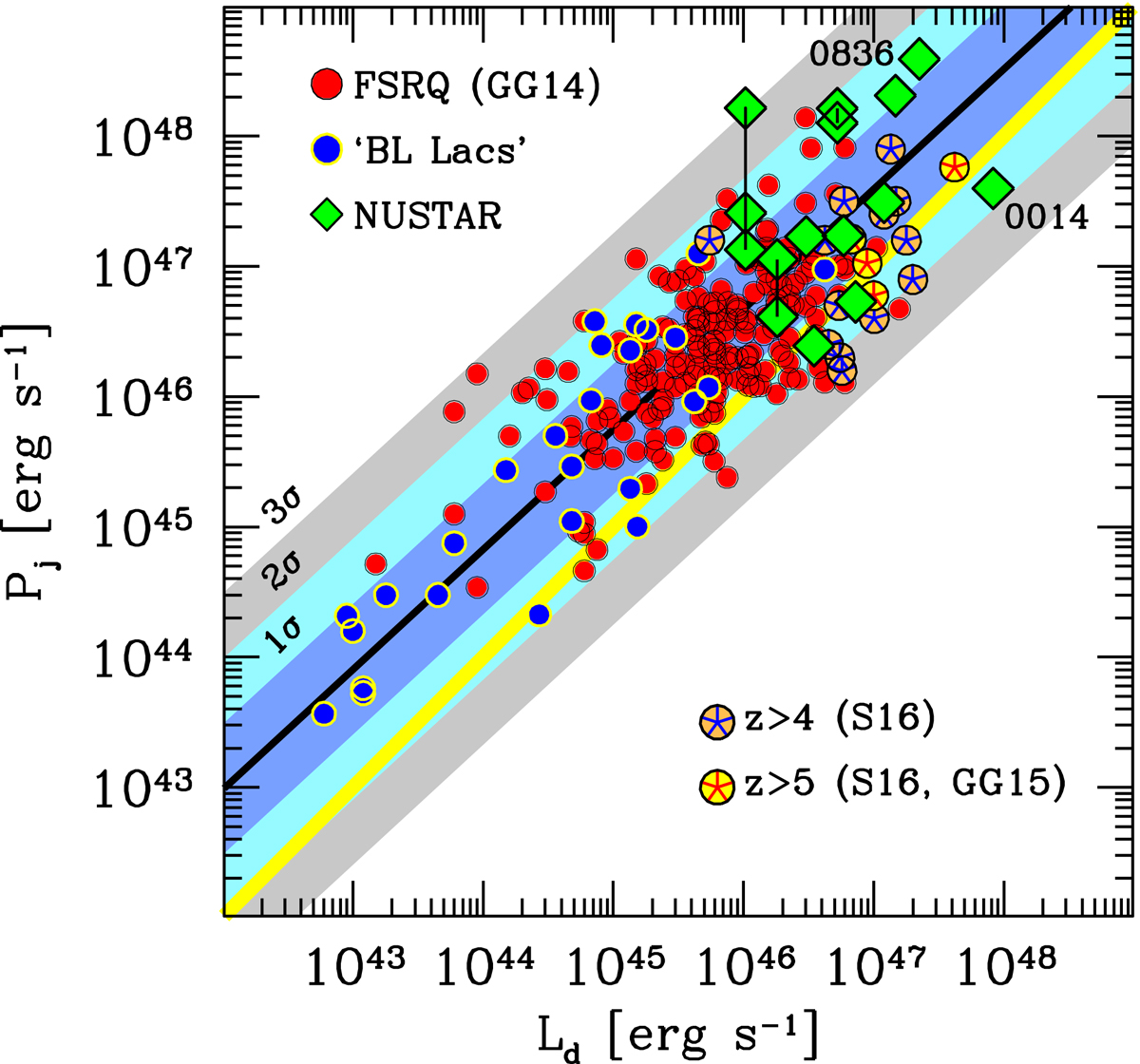Fig. 13.

Jet power as a function of disk luminosity of FSRQs (red) and “BL Lacs” (blue) considered in Ghisellini et al. (2014) compared with the NuSTAR blazars considered here. We also show the blazars with z > 4 and z > 5, considered in Sbarrato et al. (2016) and in Ghisellini et al. (2015). Segments connect different states of the same source. The NuSTAR blazars are among the most powerful, both in terms of their disk luminosity and jet power, with PKS 0836+710 having the most powerful jet, and S5 0014+81 having the most powerful accretion disk. We note that the BL Lacs shown here were the only BL Lacs observed by Sbarrato et al. (2013) with broad emission lines. They must be considered the low disk luminosity tail of FSRQ.
Current usage metrics show cumulative count of Article Views (full-text article views including HTML views, PDF and ePub downloads, according to the available data) and Abstracts Views on Vision4Press platform.
Data correspond to usage on the plateform after 2015. The current usage metrics is available 48-96 hours after online publication and is updated daily on week days.
Initial download of the metrics may take a while.


